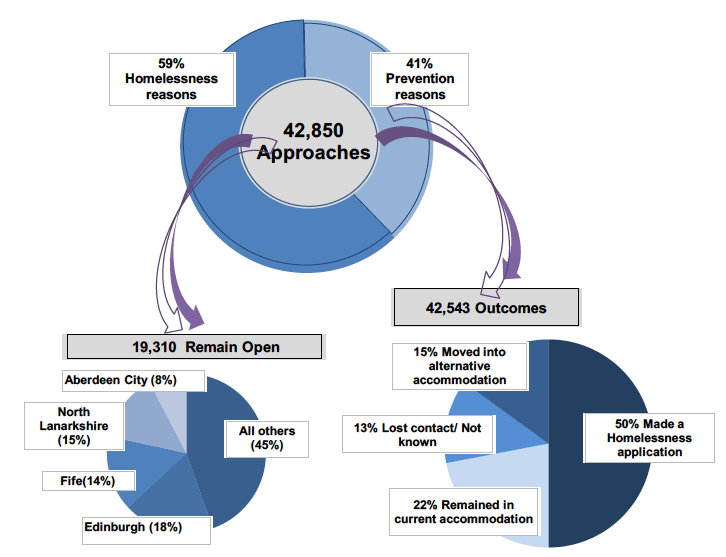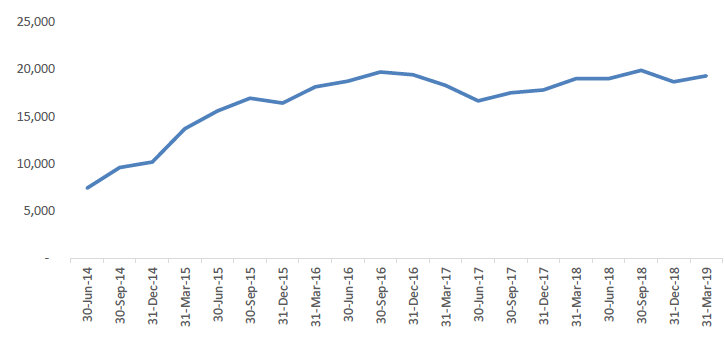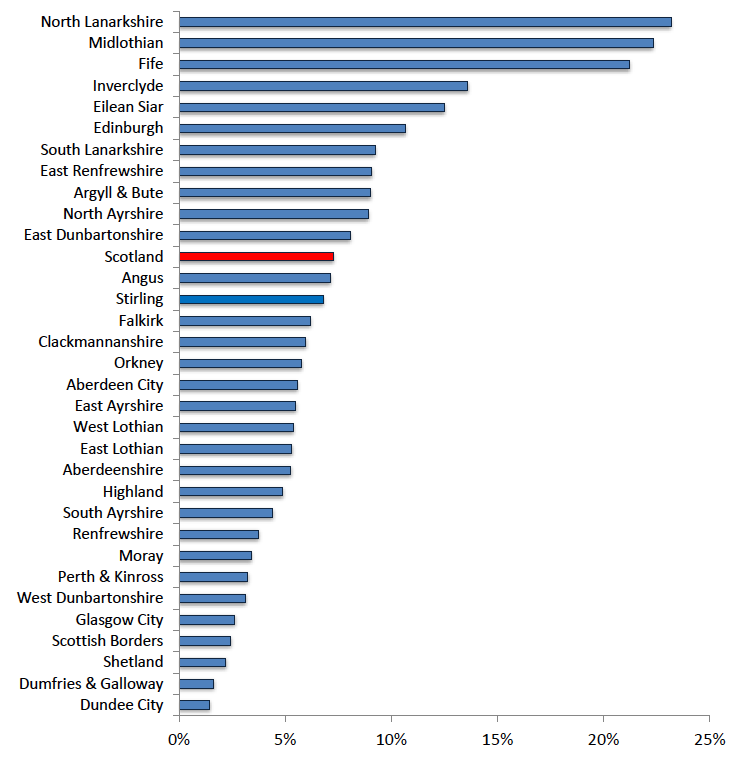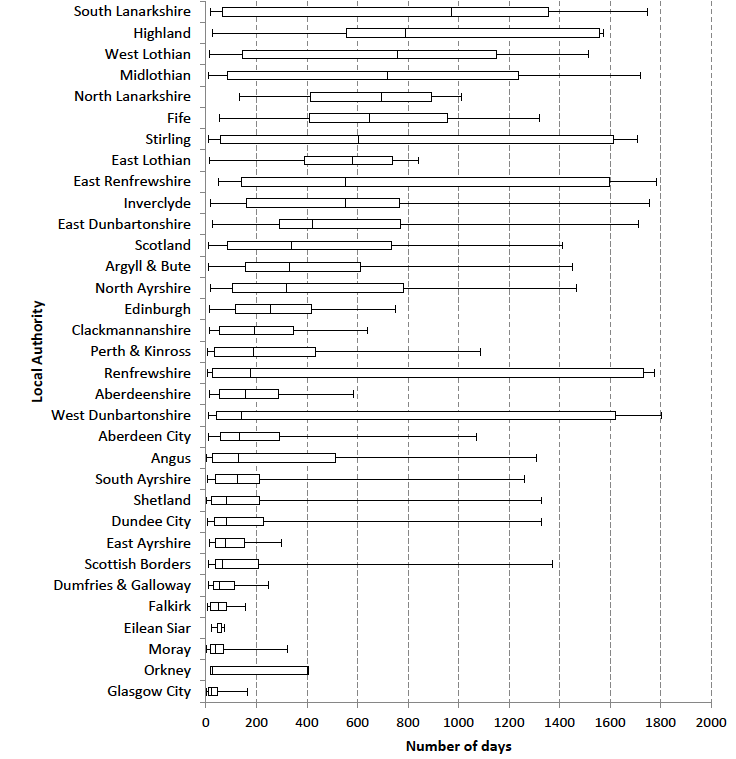Housing Options (Prevent 1) Statistics: 2018/19
Housing Options (PREVENT1) Statistics in Scotland to 31 March 2019
This document is part of a collection
Flow Diagram
Figure 2 shows a summary of household approaches and outcomes during 2018/19. There were 42,850 approaches to local authorities recorded between 1 April 2018 and 31 March 2019 (where the approach was opened between these dates). Of these, 59% were made for homelessness type reasons and 41% were for prevention type reasons.
Outcomes were recorded for 42,543 approaches (these approaches were closed between 1 April 2018 and 31 March 2019). The most common outcome was for a homelessness application to be made (50% of all outcomes), followed by remaining in current accommodation (22%) and moving to alternative accommodation (15%). Contact was lost or the outcome was unknown in 13% of closed approaches.
Figure 2: Flow diagram of all approaches to Housing Options services in Scotland, 1 April 2018 to 31 March 2019

Open Approaches
There were 19,310 approaches that were still open as at 31 March 2019. These are approaches which have not yet reached the outcome stage. Table 3 and Chart 3a show that this figure has more than doubled since the first quarter of data collection, 1 April to 30 June 2014 (from 7,430 approaches). Since then, the number of open approaches steadily increased until September 2016 (19,720 open approaches were recorded on 30 September 2016). There was a reduction (to 16,665) as at 30 June 2017, before a recent increase to a peak of 19,890 on 30 September 2018 (see Chart 3a). For Scotland, 7% of all approaches received between 1 April 2014 and 31 March 2019 remain open (19,310 of 260,670 approaches).
Chart 3a: Open approaches at the end of each quarter

Since the monitoring of PREVENT1 statistics began, some Local Authorities have built up a large number of open cases. For example, as at 31 March 2019, compared to the Scottish average of 7%, North Lanarkshire had a high proportion of approaches still open (23%) (Chart 3b).
Chart 3b: Percentage of Housing Options approach cases still open by Local Authority, of all approaches made between 1 April 2014 and 31 March 2019

Where Local Authorities have a high proportion of open cases, it is difficult to assess the effectiveness of the Housing Options approach as these approaches have no recorded outcome.
Across Scotland, half of open approaches have been open for more than 338 days (over eleven months). A quarter of such approaches have been open for more than 734 days (over two years).
There is a large degree of variation between local authorities in terms of the number of days that Housing Options cases have been open (Chart 3c).
For example, in South Lanarkshire (where 8% of approaches remain open), 50% of open cases have been open for more than 972 days (over two and a half years). The average length of time for open cases is much shorter in other local authorities. For example, in Glasgow City, the median time for an open case is 9 days. (see Annex A for explanation ‘How to understand a boxplot’)
Chart 3c: Distribution of the number of days Housing Options approach cases have been open, between approach date and 31 March 2019

Contact
Email: lee.bunce@gov.scot
There is a problem
Thanks for your feedback